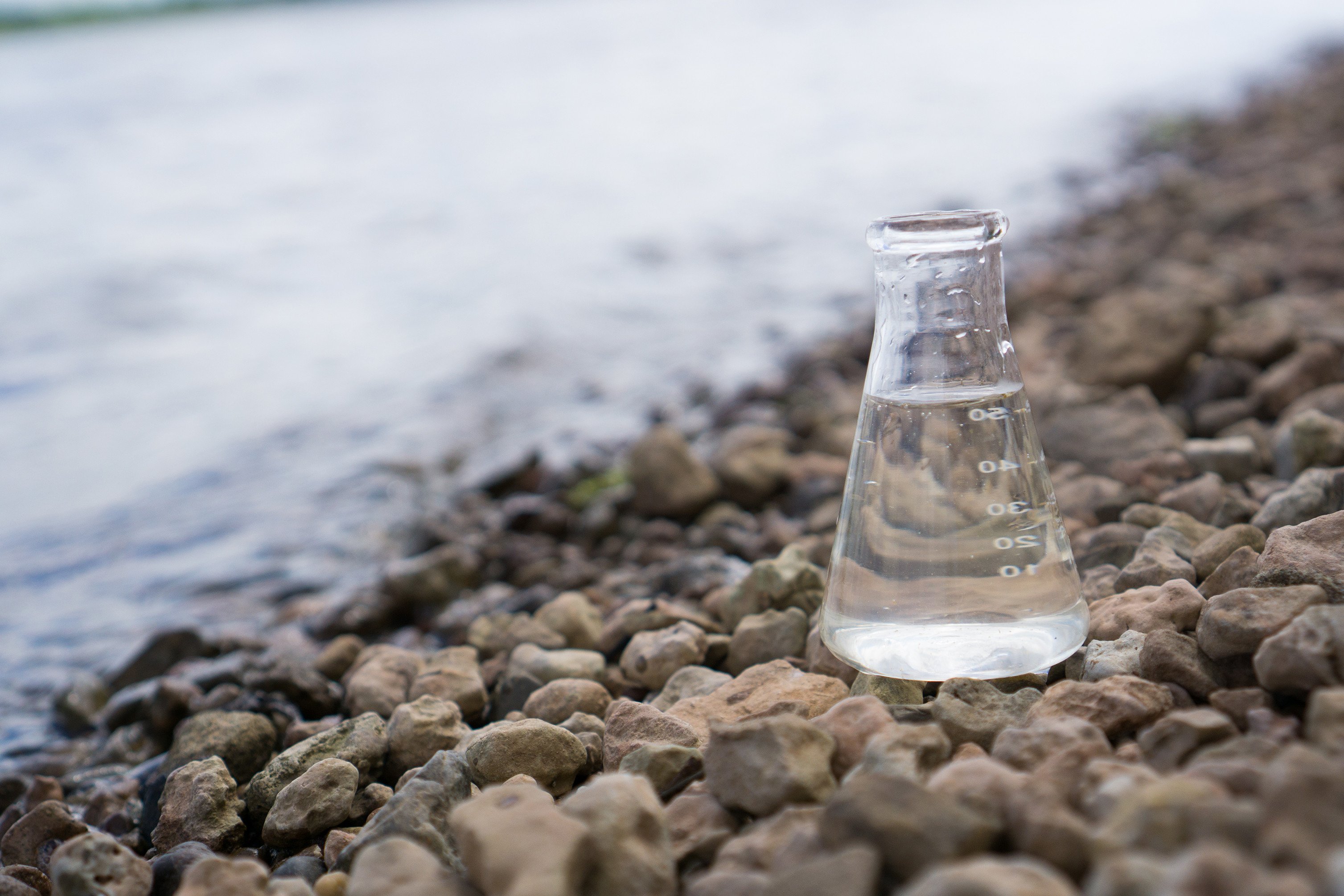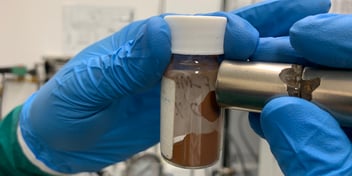Ozwater'23 Best Poster: Fate and Transport of Microplastics in Three Water Recycling Plants of South East Water

Dr Li Gao, Research Strategist at South East Water, won the Best Poster Award during Ozwater'23. His Poster 'Fate and Transport of Microplastics in Three Water Recycling Plants of South East Water' outlines his study investigating Microplastic characteristics and removal at three different water recycling plants. We sat down with him to find out more about the study.
Tell us about yourself and the researchers!
Dr Li Gao is a Research Strategist at South East Water, managing its strategic research. Dr Linhua Fan is an Associate Professor at the School of Engineering, RMIT University, he is the theme leader of Water Resource Management at RMIT WETT Research Centre.
What was your role in the microplastics research?
Dr Li Gao and A/Prof Linhua Fan initiated this research project to investigate the fate and transport of microplastics in 3 South East Water-operated water recycling plants . Dr Li Gao took the overall responsibility for this project, from planning, investigation and reporting, to community and industry engagement. A/Pro Linhua Fan was the technical leader in the project, in charge of planning and undertaking the research activities.
Can you provide us with an overall introduction to what microplastics are?
Microplastics (MPs) are commonly defined as plastic particles smaller than 5 millimetres (mm) in size. Microplastic pollution is a growing global concern for water quality, environmental and human health. Sewage treatment facilities are an important pathway for MPs that enter the environment, as they can get into the water and soil through effluent and sludge discharge/reuse. MPs pose significant health risks to humans and organisms at sufficient levels since they can contain intrinsic harmful chemicals and be a carrier of the toxic chemicals and pathogens that are present in the environment. Effective management of MPs in sewage treatment plants requires a detailed understanding of their fate and transport in the various treatment processes.
What methodology was used for this study?
As the first long-term microplastics study (over 2 years) undertaken at Australian water recycling plants, we developed a systematic methodology for the study. We selected 4 treatment processes of 3 water recycling plants that represented the different scenarios, e.g. big vs. small scale, residential vs. industry catchment, conventional activated sludge (CAS) / lagoon-based treatment vs. advanced membrane process and Class A vs. Class C effluent. We conducted 6 major sampling campaigns at the selected treatment plants over 2 years. Wastewater samples were collected from multiple sampling points along each treatment train and primary, secondary sludge and biosolids samples were also collected from a selected plant to determine the abundance of MPs (> 25µm) in the process streams and the distribution of the MPs based on their size, shape and colour. The research particularly focused on the lagoon/pond-based wastewater treatment systems as there has been almost no knowledge about their removal efficiency for the MPs. In Australia, 60% of the 1200+ WWTPs use pond/lagoon technology as a primary treatment, while 77% use ponds as part of the treatment processes. A multimedia modelling approach was employed to gain a further understanding of the MPs in such treatment systems.
What are the results from your study?
The treatment systems generally exhibited high removal efficiency for MP, ranging from 97 to 99.6%, with the tertiary treatment for Class A water production achieving the highest removal. The two lagoon-based treatment systems were found to give promising removal of MPs (97 and 98.4%, respectively), which were attributed primarily to the lengthy wastewater detention time and the CAS pretreatment of the plant influent. Fibres were shown to be the dominant microplastic species in the wastewater streams of all 3 plants. The study also found a seasonal trend of MP concentration in the plant influent that was related to the rainfall events and the possible seasonal change of population in the catchment areas.
What are the conclusions from your research?
The research demonstrated the potential of low-energy and low-cost lagoon/pond wastewater treatment systems for effective control of MPs. The new knowledge can help water utilities manage the MPs in their sewage treatment systems and mitigate microplastic pollution risk. As synthetic fibres were the main contributor to the MP in the sewage, management strategies to control their entering into and removal by the treatment systems can be explored. The knowledge of the risks of small MPs (e.g., <20 µm) and nano-sized plastics on human health and their removal rate of WWTPs is still limited, more work should be done in this space for future guidelines on treated effluent/recycled water. More details about the research outcomes can be found in our latest publications below.
- Fan, L., Mehrab Mohseni, A., Schmidt, J., Evans, B., Murdoch, B., Gao, L. (2023). Efficiency of lagoon-based municipal wastewater treatment in removing microplastics, Science of The Total Environment, 876
- Um, M., Weerackody, D., Gao, L., Mehrab Mohseni, A., Evans, B., Murdoch, B., Schmidt, J., Fan, L. (2023). Investigating the fate and transport of microplastics in a lagoon wastewater treatment system using a multimedia model approach, Journal of Hazardous Materials, 446
%20collecting%20samples%20from%20a%20wastewater%20treatment%20lagoon.jpg?width=1200&length=1200&name=Ozwater23_Best_Poster_Award_Dr%20_Arash%20Mohseni%20(RMIT)%20collecting%20samples%20from%20a%20wastewater%20treatment%20lagoon.jpg)

Microscopic images of the microplastics derived from the wastewater samples

A facultative wastewater treatment lagoon under the study

An aeration lagoon under the study
About the authors
Dr Li Gao
Research Strategist, South East Water
Li Gao is a Research Strategist at South East Water, managing its strategic research. He has more than 15 years of research and industry experience in water science and engineering, with technical expertise and research interests in water treatment, emerging contaminant removal, membrane technology, and resource recovery. Li has been an Australian Research Council inaugural Industry Fellow, an elected Fellow and Chartered Engineer of Engineers Australia, and an elected Fellow of the Royal Society of Chemistry (UK).
Dr Linhua Fan
Associate Professor, School of Engineering, RMIT University
Linhua has over 20 years of experience conducting R&D projects for water utilities. He is currently affiliated with the International Water Association (IWA) and Engineers Australia (EA). Linhua’s primary areas of expertise include water quality management, and water and wastewater treatment. He is particularly interested in studying the fate and control of emerging contaminants, such as microplastics, PFAS, PPCPs in water and wastewater systems. Linhua has published over 130 peer-reviewed journal and conference articles in water-related areas.
Participation of RMIT undergraduate and postgraduate students in the microplastic research
• Chemical Engineering undergraduate students Michelle Um, Dhakshitha Weerackody and Monique Wiener participated in the research through their Capstone Project.
• Environmental Engineering postgraduate students Robin Babu and Tsitso Mocumi participated in the research through their final year Research Project.

